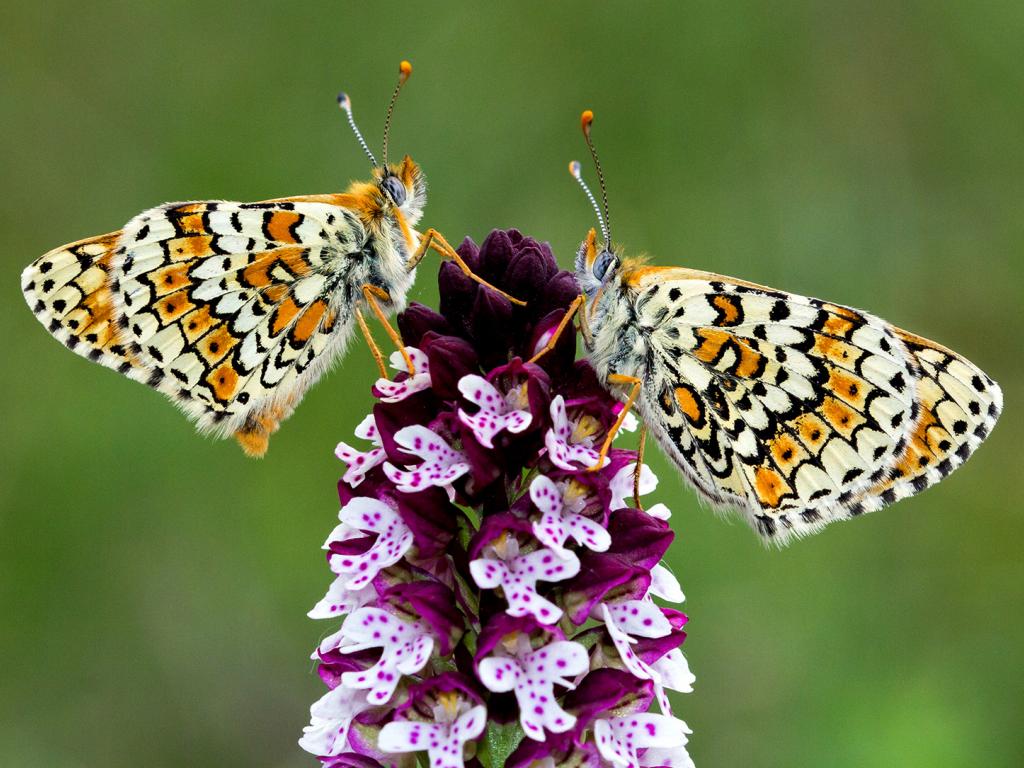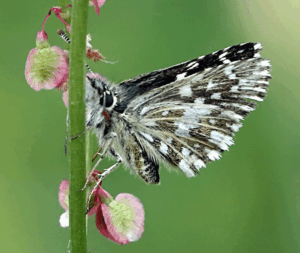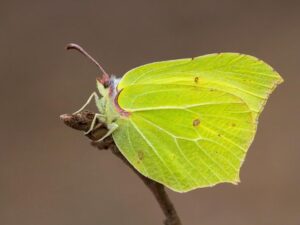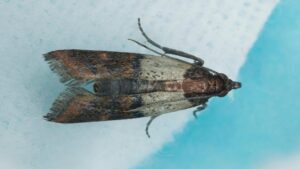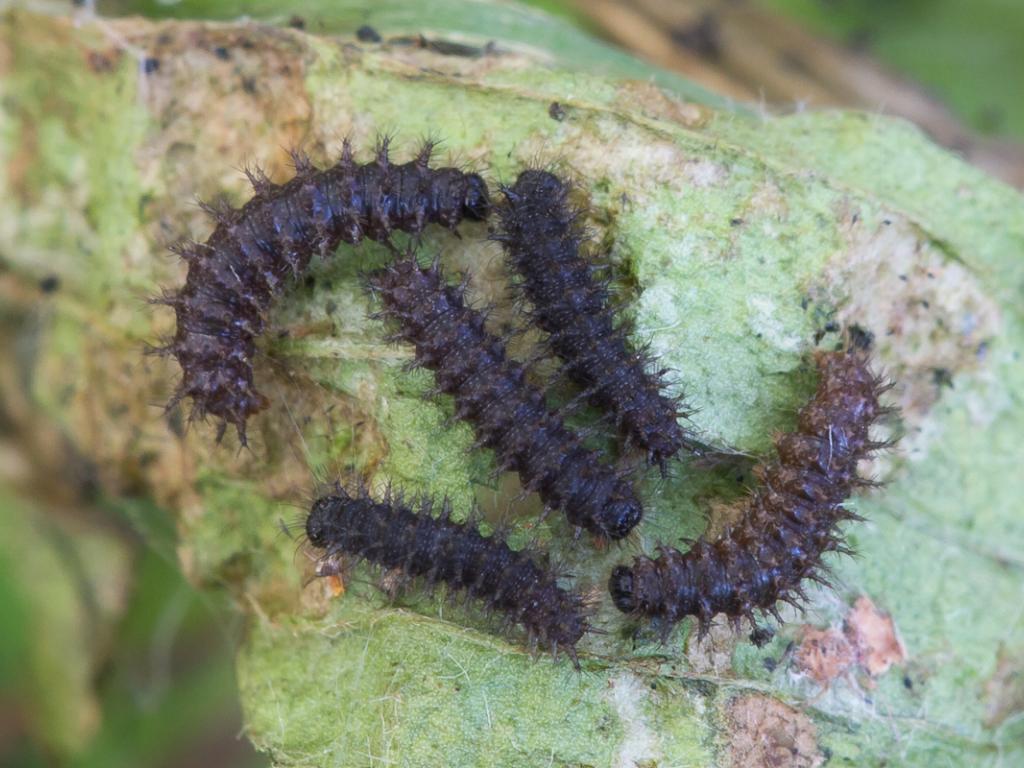
Size and Family
- Family: Fritllaries
- Size: Small/Medium
- Wing Span Range (male to female): 41-47mm
Conservation status
- Section 41 species of principal importance under the NERC Act in England
- UK BAP status: Priority Species
- Butterfly Conservation priority: High
- European Status: Not threatened
- Protected under Schedule 5 of the 1981 Wildlife and Countryside Act (for sale only)
Orange and brown chequered butterfly with pattern of cream and orange bands and black marks on the underside of wings. The Glanville Fritillary is virtually restricted to coastal landslips on the southern half of the Isle of Wight and the Channel Islands along with a few coastal locations on the mainland.
The status of the butterfly appears to have changed little in recent decades, though there has been some loss of habitat due to coastal protection measures. However, there are only a handful of core breeding areas and it remains a vulnerable species.
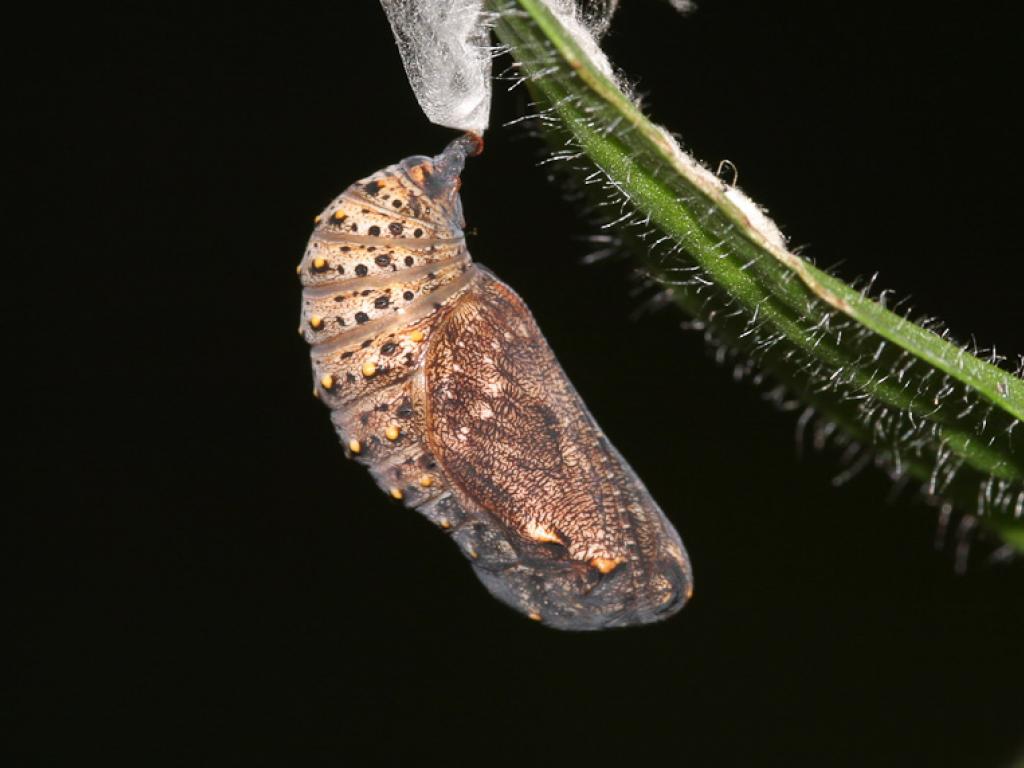
The Glanville fritillary (Melitaea cinxia) is a butterfly of the family Nymphalidae. It is named for the naturalist who discovered it and the checkerboard pattern on its wings. These butterflies live in almost all of Europe, especially Finland, and in parts of northwest Africa. They are absent from the far north of Europe and parts of the Iberian Peninsula. To the east they are found across the Palearctic (in Turkey, Russia, northern Kazakhstan, and Mongolia).
It has been discovered that this butterfly only mates one time in June or July and lays its eggs. It does not provide any protection to these eggs or care for the offspring. As adults, the Glanville fritillaries are short-lived; they spend most of their lives as caterpillars. As caterpillars, Glanville fritillaries enter a stage of diapause, which is a period of suspended development, during the winter time.
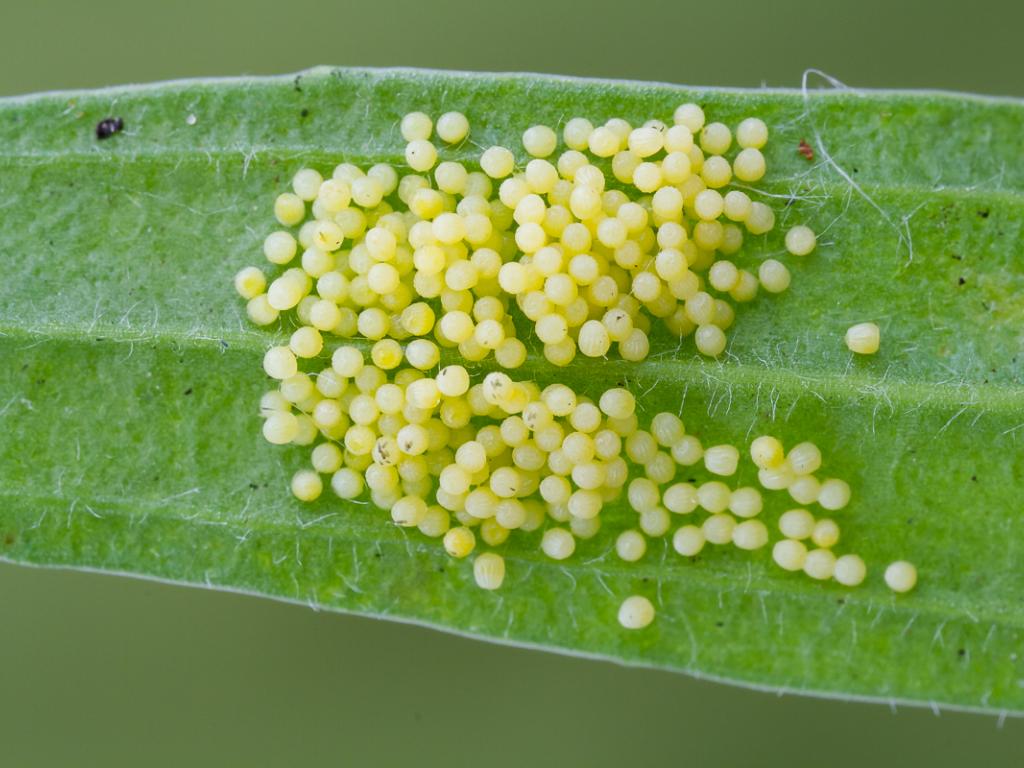
The spiked speedwell and ribwort plantain are the Glanville fritillary’s preferred plants to lay eggs and to eat as larvae. Female butterflies will show a preference for one plant species over the other when deciding where to lay their eggs, but the caterpillars have no preference once they hatch. After entering the adult phase the fritillaries feed on nectar of the spiked speedwell and ribwort plantain, among others.
This species of butterfly is at risk of population decline because it is not a migratory species. Though widespread, populations in Finland are at risk because they are not able to travel great distances as easily as other species, such as monarchs, if their environment should suddenly become unsuitable.
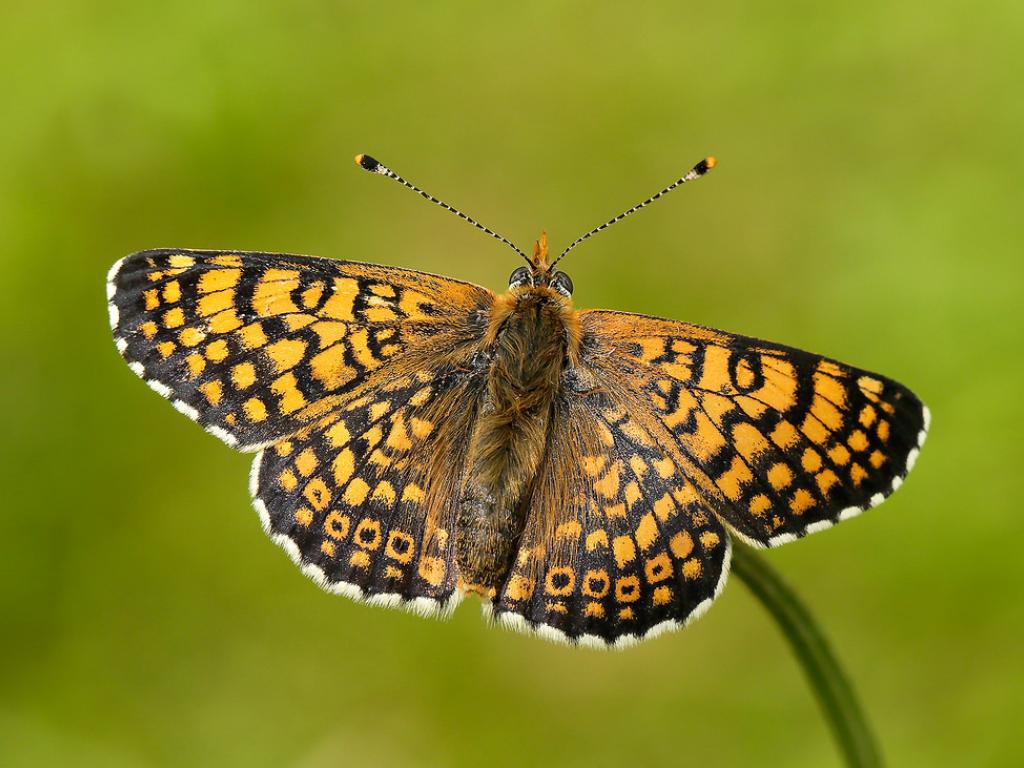
About
The Glanville fritillary is a beautiful orange and brown chequered butterfly that can only be found at a few locations in southern England, as well as on the Channel Islands. It’s a sun-loving butterfly, which flies on warm days with little to no wind, and hides away amongst grasses on cooler, windier days.
The Glanville fritillary favours habitats where the topsoil is regularly disturbed, allowing its larval foodplant (ribwort plantain) and nectar sources (such as dandelion, hawkweeds, bird’s-foot trefoil, and thrift) to flourish. For this reason, it is often encountered on cliff sides, where the regular erosion of the cliffs creates the perfect disturbed conditions. The butterflies often form small discrete colonies, with little contact between them.
How to identify
The Glanville fritillary has a chequered pattern of orange and dark brown on the upper side of its wings. The underside of its hind wings are white with distinct orange bands and black markings.
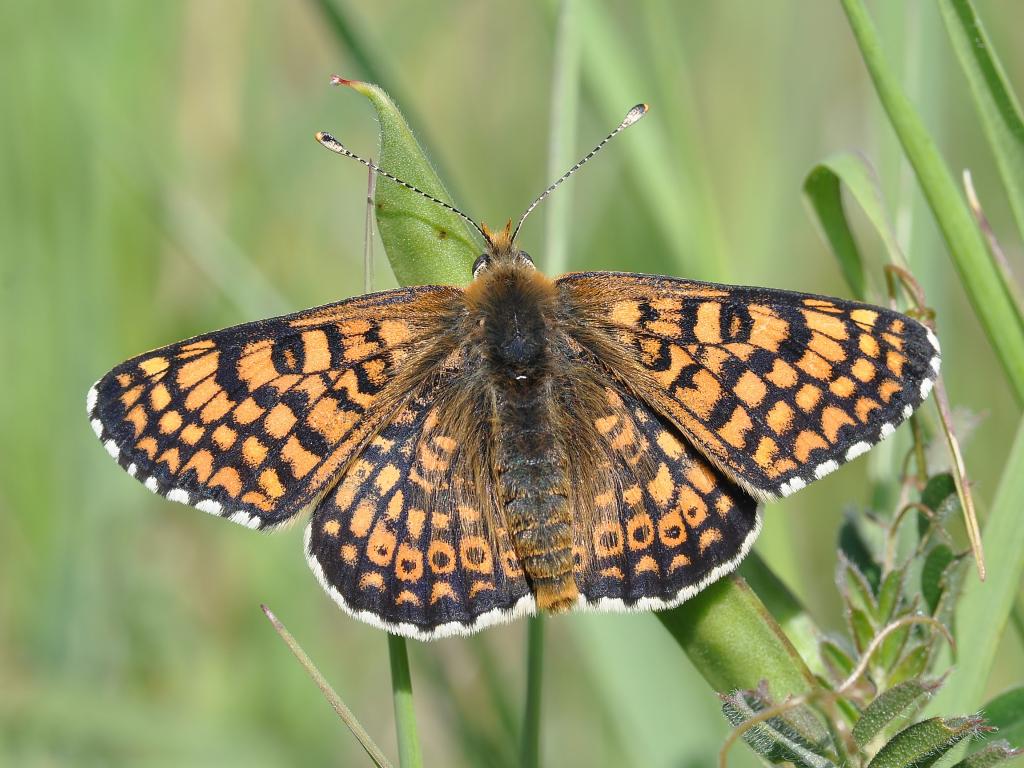
Distribution
The Glanville fritillary is found along the southern coast of the Isle of Wight, in the Channel Islands, and at a few locations in mainland England.
It is perhaps more common in Alderney than anywhere else in the British Isles, but it is a vulnerable species, liable to sudden arrivals and disappearances. In Guernsey it is making a comeback, but it has disappeared completely from Jersey in the past decade.
Did you know?
The name “Glanville” is a tribute to Lady Eleanor Glanville, the 17th century naturalist who discovered the species. The butterfly was originally known as the Lincolnshire fritillary, as Lady Glanville first discovered the species in the Lincolnshire Wolds.
Eleanor Glanville is sometimes described as the first lady of British natural history; she studied butterflies at a time when it was considered improper behaviour for a respectable woman. After her death, Eleanor Glanville’s family disputed her will on the grounds that she had lost her wits, as ‘nobody who was not deprived of their senses would go in pursuit of butterflies’.

